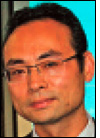Feb 19, 2013Australia, like many industrial countries, has an aging population. To help older people live independently and safely in their own homes, researchers at the University of Adelaide recently launched an ambitious project using RFID and sensor technologies. The goal: To automatically identify and monitor human activity to determine if an individual's normal routine is being maintained and provide timely assistance if needed.
"Our work will be among the first few projects in the world conducting large-scale common-sense reasoning in automatic human-activity recognition," says Michael Sheng, an associate professor in the School of Computer Science who is leading the project.
The plan is to create a computing platform linked to RFID and sensors on which applications can be built. One application will monitor and interpret daily activities of elderly people. The aim is to prevent falls and other problems, and to alert the proper authorities if an incident does occur.
"Our goal is that people do not have to wear any devices, so we will deploy sensors within the environment," Sheng says. "We'll collect sensor readings, and then software will interpret these in real time."
Sensors could monitor motion, force and other environmental factors. Some might work with conventional RFID, in which a tag communicates with a reader. Others will be on wireless mesh network nodes, which pass environmental information from one sensor to another until it reaches a base station that communicates it to the back-end software application.
The system will be able to check whether an elderly person living at home is performing daily routines. Any interruption to those routines might indicate a problem. The software will exploit common-sense knowledge when interpreting data. If, for example, an individual is walking around at 2 p.m., that will not raise any concerns. But if the same person is walking around at 2 a.m., that might indicate a problem.
Sheng has received support from the United States and the United Kingdom. "Taking care of the elderly is becoming a significant problem for most developed countries, where the proportion of older people is rapidly increasing and the labor market is tightening," he says. "There are more elderly people to be looked after, but fewer people to do it."
Sheng hopes the project will bear fruit within three years, and products to support the elderly can be ready to market two or three years after that.

